Studio Ghibli is one of the most celebrated and acclaimed animation studios out there. Often described as Japan's answer to Disney, the 35-year-old studio has introduced countless people to the wonders of animation, as well as produce some of the highest-grossing films Japan has ever released.
What's most remarkable about Ghibli is just how varied their output has been. The studio has given us unforgettable classic fairytale-like movies aimed at kids, complex and mature fantasy epics, and tragic and beautiful dramas in a relatively short period of time. It's no wonder, then, to see how influential the work initiated by friends and longtime collaborators Hayao Miyazaki and Isao Takahata has been on the industry. Everyone from Guillermo del Toro, to Wes Anderson, to the animators at Cartoon Saloon, have been influenced by the works of Studio Ghibli.
This makes ranking their 23 feature films a nearly impossible task, given how different a whimsical movie about a young witch is from a drama about a WWII airplane designer, from a movie about shapeshifting raccoon dogs fighting urbanization. More than anything, the works of Studio Ghibli do a great job romanticizing the ordinary. Where any other studio or filmmaker would focus on the feeling of wanting to get away from home to live an extraordinary life, Ghibli films understand that there is magic in day-to-day life too.
In short, nearly all the Ghibli films are worth your time, but everyone likes to organize things, so we'll try to provide a totally objective, definitive, and universal ranking of the Studio Ghibli films. Before we start, however, it must be noted that we are counting Nausicaä of the Valley of the Wind because it's the film that directly led to the foundation of Studio Ghibli, and had most of its creative team join Ghibli right afterward.
Without further ado, here are the best Studio Ghibli movies, ranked.
23. Earwig and the Witch (2020)
The first 3D CGI-animated film from Studio Ghibli, and hopefully the last 3D CGI-animated Studio Ghibli film. Gorō Miyazaki shows he knows all the tropes and ingredients to make a good Ghibli film, but the film lacks the substance of one. There are some cool ideas about the feeling when your parents stop noticing or caring about you, which only makes it more disappointing to see this being little more than a cover of Gorō's dad's greatest hits.
22. Tales From Earthsea (2006)
Another unfortunate Gorō dud. Write it off as inexperience, or a series of books that are impossibly difficult to adapt. Whatever it may be, there's no denying that Tales From Earthsea gets too busy trying to mix and match plot points from different books that it forgets to tell a coherent story. There are some good thematic moments here, but they arrive as too little, too late, to the point where even the dragons aren't enough to keep your eyes on the screen rather than anywhere else.
21. Ocean Waves (1993)
This is technically a TV movie meant as a more cheaply-made animation exercise for some of the younger staff members at Ghibli, Ocean Waves could have easily passed as the work of a senior animator at the studio with a much larger budget. There is not a hint of magic or whimsy in the story, but it still has the subtle melancholy and drama that the studio so effortlessly makes pop. It doesn't hit as hard as the other films on the list when it comes to themes and motifs, if you want a movie about adolescent alienation and the feeling of reflecting on certain relationships years later and realizing how much you misunderstood certain encounters, this is the Ghibli movie for you.
20. The Secret World of Arrietty (2010)
Hiromasa Yonebayashi makes his directorial debut with a film that feels too much like an attempt to replicate the glory days of the studio rather than a fresh new voice trying out something new. The film is set in a world where tiny people known as "borrowers" live undetected alongside humans, "borrowing" things from them when they need it. We follow Arrietty, a borrower girl who becomes friends with a human boy named Shō. Even if the story is lacking in certain places, the visuals pop with the kind of creativity you'd expect from Ghibli.
19. From Up on Poppy Hill (2011)
The one Gorō worth watching, this is a more straightforward drama compared to other entries in this list. From Up on Poppy Hill follows two boarding schoolers in the early 1960s as they fight to save a clubhouse from being demolished, while the rest of the city reckons with the legacy of WWII and the upcoming 1964 Summer Olympics in Tokyo. The film has great energy and a sense of nostalgia for a specific time in Japanese history that makes this a distinct experience, even if it never reaches the dramatic heights of the rest of the studio's output.
18. The Cat Returns (2002)
The fact that this is still one of the good Ghibli films goes to show how excellent their output is. The Cat Returns is the rare Ghibli film that's a spin-off of another one of their previous films, more specifically Whisper of the Heart, focusing on a minor character from that film. Hiroyuki Morita is, unfortunately, no Miyazaki or Yoshifumi Kondo, but he still builds a compelling narrative with a more fantastical story than most other Ghibli movies. It's fun, but kind of forgettable. If you're a cat person, you should definitely give this film a watch.
17. When Marnie Was There (2014)
A more subtle film than previous Ghibli films, Yonebayashi's second directorial effort nevertheless serves as a fascinating elegy for the studio, before Miyazaki announced his comeback and he let his son make a terrible CGI film. When Marnie Was There is a rewarding story about accepting the past in order to move forward and follows a withdrawn 12-year-old foster child who is sent to a rural town to treat her asthma. While there, she begins a friendship with a young girl named Marnie, who may or may not be a ghost. Superficially simple, the story still packs a hard emotional punch, one that catches you by surprise but reminds you of the best that Ghibli represents and can do.
16. Ponyo (2008)
Without a doubt, Ghibli's kiddiest film to date, but far from its worst. Ponyo is a mix between The Little Mermaid and Pinocchio, the film follows a goldfish girl named Ponyo who decides she wants to become a human after a fateful encounter with a boy named Sōsuke. The film is absolutely delightful, with enough bright colors and charming characters to captivate the little ones, and a heartwarming story that will make the parents smile while watching. Sure, this may lack the heavier themes of other Miyazaki movies, but the hand-drawn animation and Ponyo's electrifying energy is enough to keep you engaged.
15. Howl's Moving Castle (2004)
Visually, one of Ghibli's most stunning features, yet one that feels a bit redundant given how many of their films share the same themes and do them better. The titular castle is absolutely striking, a remarkable feat of animation filled with excruciating detail, and the film's depiction of magic is one of the most unique depictions in cinema. The titular Howl's powers feel ancient yet incredibly powerful. Though this remains a fascinating "what if?" scenario due to Digimon the Movie's Mamoru Hosoda having originally signed on to direct this film before being fired, Miyazaki still does a good job in combining his love for magic, adventure, and whimsy, with a poignant response to the war in Iraq and the way violence and war destroy the soul. If you watch the dub version of the film, you'll be presented with a delightful performance by Billy Crystal as a sentient fire demon.
14. My Neighbors the Yamadas (1999)
Isao Takahata's adaptation of the popular Nono-chan manga feels like a slice-of-life version of Totoro, exchanging the fairy-tale creatures for hilarious vignettes of the everyday life of a regular family. What makes this special is the way the film is animated to look like newspaper comic strips, using the medium to tell a story in a way that otherwise could not be replicated.
13. Nausicaä of the Valley of the Wind (1984)
Though it was made before the actual founding of Studio Ghibli, Nausicäa of the Valley of the Wind gives viewers a glimpse into much of what would make Studio Ghibli the powerhouse it'd become. It's a less graphic version of Princess Mononoke that nevertheless shares its anger at the way humans treat nature. What differentiates Nausicaa is that it doesn't offer the same nuance approach to villains that Mononoke has, because it doesn't extend them any sympathy. The film is set in the far future, where the air has become so toxic that humans are forced to wear face masks and live in isolated cities to protect themselves from giant mutant insects. The titular Nausicaä is a princess who sets out to stop a militaristic faction from resurrecting an ancient living weapon to reinforce humanity's dominance over nature. Though it may feel a bit redundant if you watch Mononoke beforehand, the worldbuilding, creature design, and more optimistic ending to Nausicaa make this a film worth seeking out.
12. Only Yesterday (1991)
There comes a point in everyone's life when they realize life didn't turn out to be the way they imagined as kids, so of course, Takahata would make that into a movie. Only Yesterday follows a woman reflecting on her childhood memories while on a train ride to the countryside. The film is an observation of everything from social class, the role of women in Japanese society, urbanization, the generational gap, and the question whether you betray your past self by not following every one of the dreams you had as a kid. Though this is the most low-key of Ghibli's films, it's still a powerful narrative, one that feels like the kind of indie drama that would win every award at a film festival.
11. The Wind Rises (2013)
Intended to be Miyazaki's final film before retirement, this is a great film about an artist reflecting on his legacy. Like Takahata with The Tale of Princess Kaguya, Miyazaki takes his love of planes to tell the story of a WWII airplane designer which also serves as a reflection of a lifetime making anti-war films that were never seen as sufficiently anti-war. Miyazaki splendidly and meticulously gives us a glimpse at the complexity of both loving airplanes and being a pacifist who knows the true purpose of those planes. The Wind Rises, then, becomes as much a film about a designer coming to terms with his creation being used for horrible purposes, as a filmmaker coming to terms with his creative output being misinterpreted, and reinterpreted in ways he never imagined. It may be a more muted film than Miyazaki's earlier work, but it's a fantastic film about being forced to become a realist and a great look back at the work of a master at the top of his game.
10. Porco Rosso (1992)
A great movie made infinitely better by having Michael Keaton voice the titular character in the US dub, Porco Rosso is Ghibli's most straightforward action/adventure film. This is a love letter to WWII-era epics like Casablanca, following an Italian flying ace in the 1930s hunting air pirates in the Adriatic Sea, only he also has the face of a pig. Porco is one of Ghibli's most memorable characters, a classic hotshot, chauvinistic adventure-movie star you could totally see Humphrey Bogart play if it was made in the 1940s. Of course, Miyazaki is not going to just give us an adventure movie, because he also takes the opportunity to comment on the rise of fascism in Italy during the 1930s, with Mussolini's face a constant presence in the background, talk of secret police becoming more prominent, a flashback scene that walks the line between fantastical and super grounded in reality, all leading to a rallying cry that feels all the more powerful today: "I'd rather be a pig than a fascist."
9. Pom Poko (1994)
Studio Ghibli has a lot of weird films, but there's no film as balls-to-the-wall weird as the one with the giant magical tanuki scrotums.
You heard that right. Though Grave of the Fireflies is Isao Takahata's rawest and darkest film, this is his version of Princess Mononoke — a furiously angry dark comedy about nature striking back against suburban development. Defending nature is a group of tanuki (or raccoon dogs) who aren't afraid of haunting nearby construction sites to put the fear of god into people by using their huge scrotums to shapeshift. This being Takahata, you shouldn't count on Pom Poko having a cheerful ending, especially given that the film is based around a real residential development around Tokyo that already existed by the time the film was released. There's a surprising amount of body horror, sexual tension among tanuki, and unrepentant murder that you'd expect on a children's movie, but there's no denying Takahata's infectious passion for the message that comes up time and time again in the works of Studio Ghibli — urban development and expansion does the irreparable danger to nature, and when we lose that, we lose ourselves.
8. Castle in the Sky (1986)
Technically the first proper Studio Ghibli title, and the beginning of many tropes that the studio would repeat for years. Once again, the story is simple enough, following a boy and a girl trying to find a magic crystal and a castle in the sky before a group of pirates catch up to them. And once again, the story is but a starting point for a grander exploration of the struggle between nature and man-made technology, which would become such a big part of Ghibli's work. This is one of the rare Ghibli films to feature a fully recognizable and unsympathetic villain, yet it's one hell of a despicable and fun-to-watch villain. If nothing else, Castle in the Sky is worth watching for how much it influenced other films, especially in its steampunk-like aesthetic, which can be found in everything from Atlantis: The Lost Empire, to The Iron Giant and WALL-E.
7. Grave of the Fireflies (1988)
Also known as the Ghibli movies you don't show to kids, or to people who don't want to cry every 5 minutes, Grave of the Fireflies is one of Takahata's most powerful films, and one that should nonetheless be experienced by people of all ages. The film follows two siblings during the final months of WWII, as they face unspeakable horrors following the death of their mother during an air raid. Make no mistake, this is far from the whimsy of Totoro or Kiki, but a grim and grounded anti-war film that catches you off-guard with a story of loss, pain and also love. Be sure to have plenty of tissues at hand. Due to licensing issues, Grave of the Fireflies is not available on HBO Max but it is available on demand.
6. My Neighbor Totoro (1988)
The thing about Studio Ghibli is that there is a gateway movie for every person and every occasion. Whether you're a hardened old soul who loves WWII capers, a rebellious teen, or a young and impressionable child, there's a Ghibli movie for you to obsess over. When it comes to young kids, there is no better place to start than My Neighbor Totoro. Seriously, try showing this movie to kids and 1) not go crazy after listening to the excellent, magical theme song for the film, and 2) not have them become addicted to Studio Ghibli. If there's one thing Miyazaki is incredibly good at, is making surprisingly rewatchable films where not a lot happens, but that still manage to charm and delight after 100 viewings.
There's a reason Totoro has become the mascot for Studio Ghibli, and there's a reason this outright adorable, cuddly, and indescribable magical animal/spirit being has become an absolute world icon. This is Miyazaki's most serene film, a masterpiece of soothing filmmaking with a simple story driven by the whims and imagination of two young sisters desperate to find escapism from their grim reality.
5. Whisper of the Heart (1995)
Only Studio Ghibli can make a film about a teenage girl's self-actualization that's centered around John Denver's "Take Me Home, Country Roads" song and make it rule. Unfortunately, this is the first and only film made by Yoshifumi Kondo, who was being groomed as Miyazaki's successor but died a few years after the film's release. The film is the closest Ghibli gets to a proper romance movie, following a 14-year-old aspiring writer named Shizuki who spends most of her time reading and picturing fantastical adventures rather than pursuing them herself. When she meets a young aspiring violin maker, she instantly gets a crush on him, and is inspired to follow his lead and pursue her passions no matter what.
What makes this a standout among Ghibli films is how it embraces both the importance of the creative process in how young people make sense of a chaotic world, and also how difficult and not-straightforward it can be. Shizuki is a diamond in the rough, and she eventually comes to terms with it. The characters in Whispers of the Heart know there will always be people better than them, and they don't become world-class artists yet, but they are okay with it, because this is only the start of their journey, and they have to experience all of it. There's a reason why footage from this film became the background animation for "Lofi Girl," a channel that fueled countless students and young creatives' inspiration sessions. Plus, did I mention that the plot revolves around John Denver's ode to the feeling of comfort and belonging? Because you will have "Take Me Home, Country Roads" stuck in your head for days on end.
4. Spirited Away (2001)
There's a reason why Spirited Away held on as the highest-grossing anime film for nearly two decades after its release, and why this was the first Ghibli movie to win an Academy Award. For starters, this is perhaps the most accessible Ghibli film, combining the spiritual themes Hayao Miyazaki explores over and over again, with a simple yet very effective modern take on the Wizard of Oz "isekai" story that is now extremely prominent in seasonal TV anime. We follow Chihiro, a 10-year-old girl who finds herself trapped in a sort of resort for supernatural beings and spirits, and has to find a way to free her parents from a horrible curse.
It must be said that, though this is a movie for kids, it is genuinely scary. Chihiro discovering what happened to her parents is a grotesque, scary, and ugly scene that sets the mood for the rest of the film, and many of the dozens of spirits can give you nightmares if watched too early. Of course, this is still Ghibli, so there's a whimsical tone to the movie that perfectly balances the horror imagery, as it stays centered on the coming-of-age tale of Chihiro herself. A trend with Ghibli is that their female protagonists are both empowered and vulnerable in a way that no other studio manages to do, and this is no exception. Animation-wise, Spirited Away is a true marvel, bringing dozens of unique and memorable characters to life in a way that rivals any other animated film.

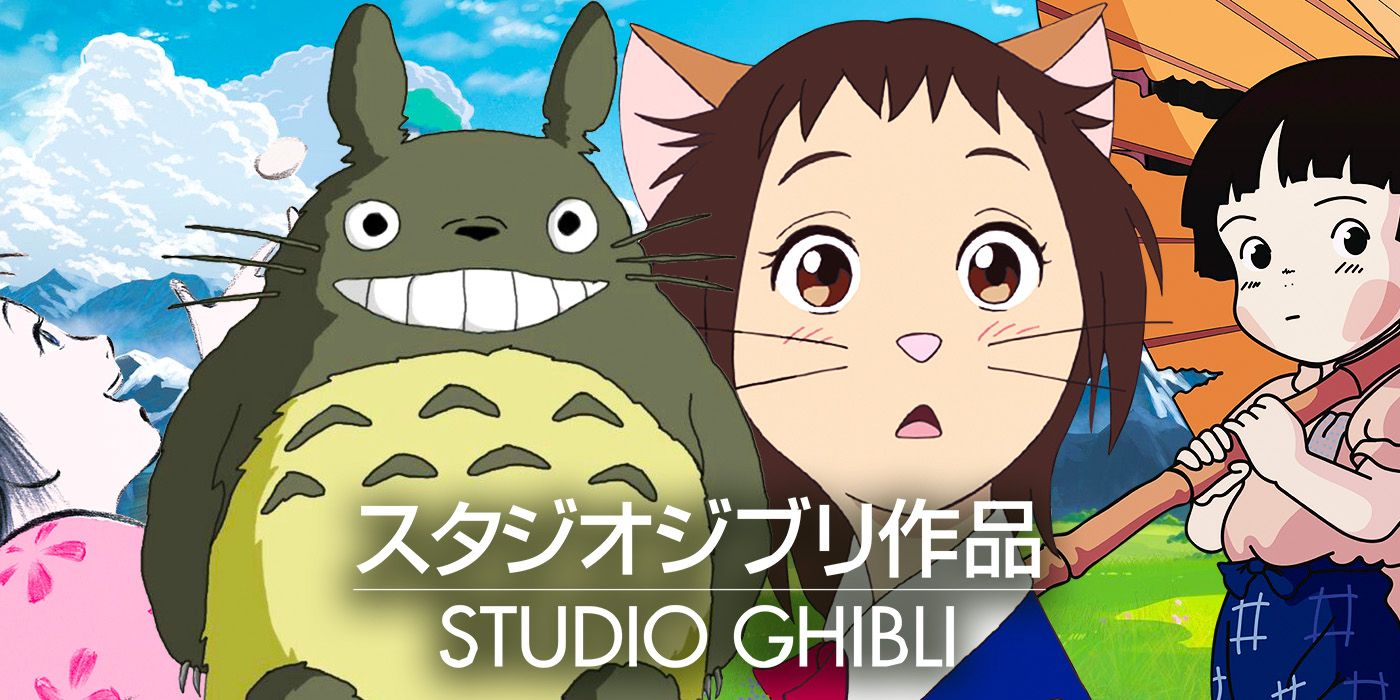
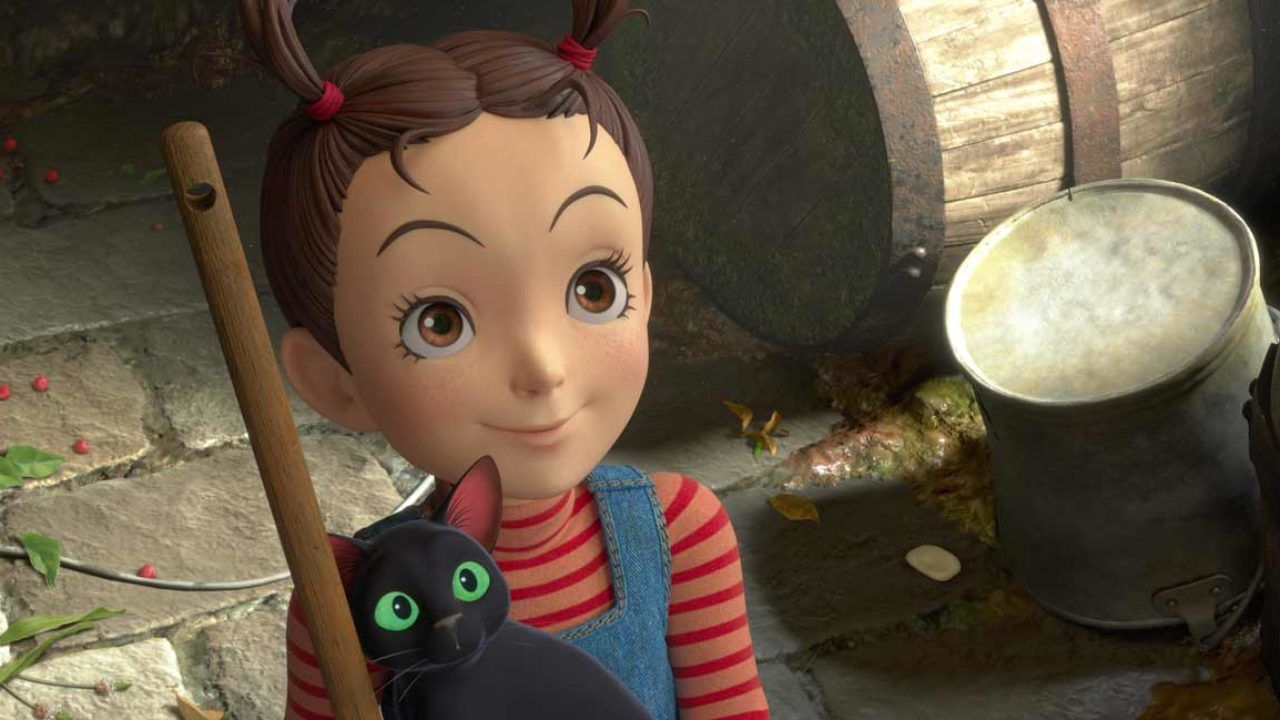
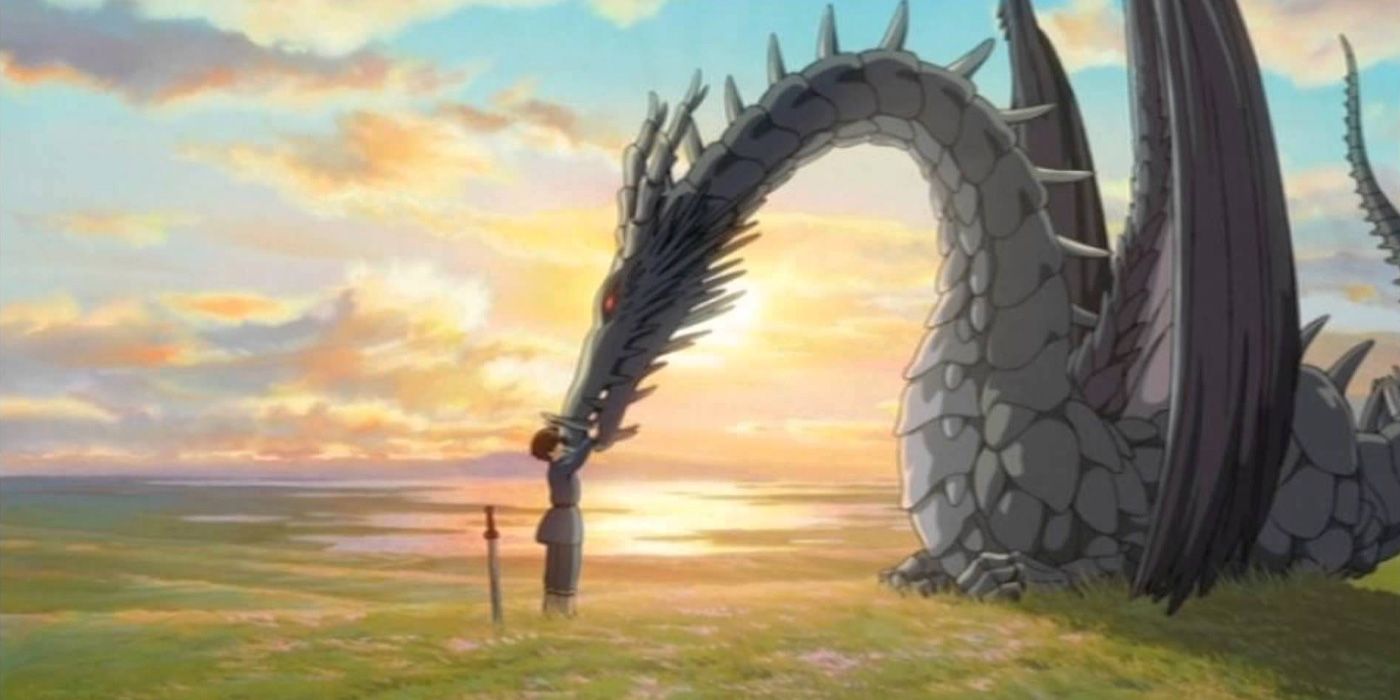
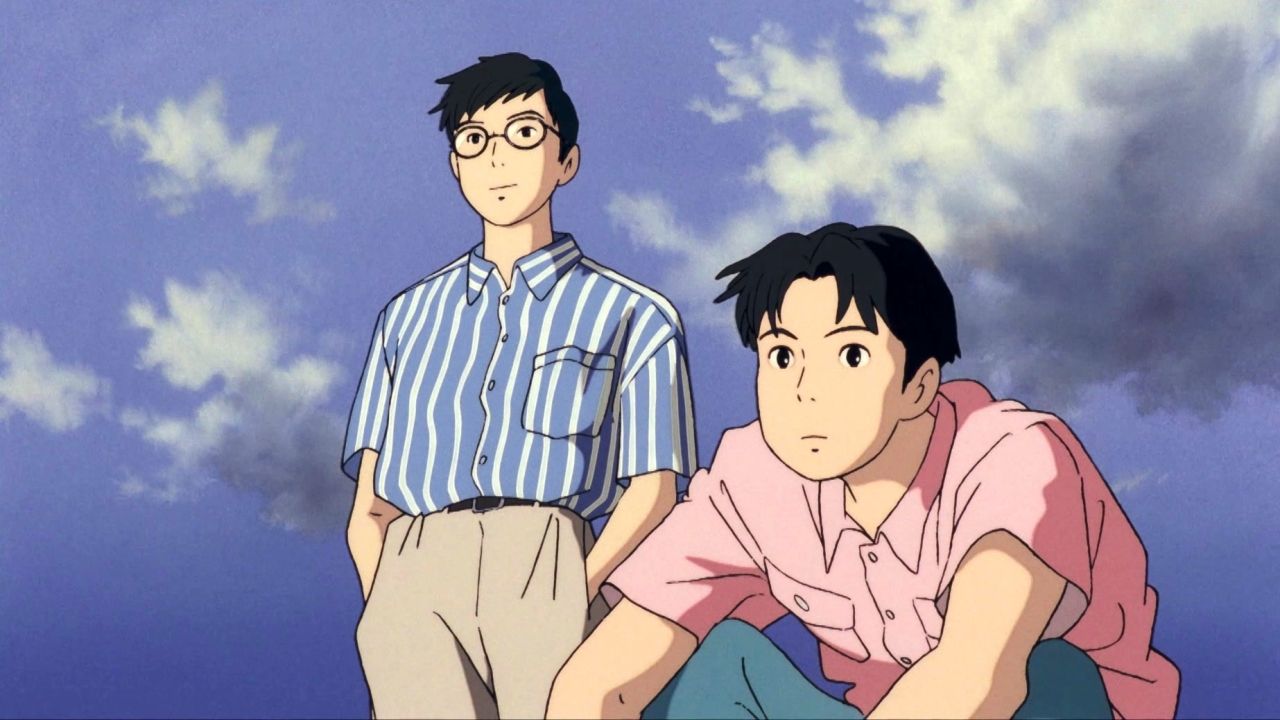
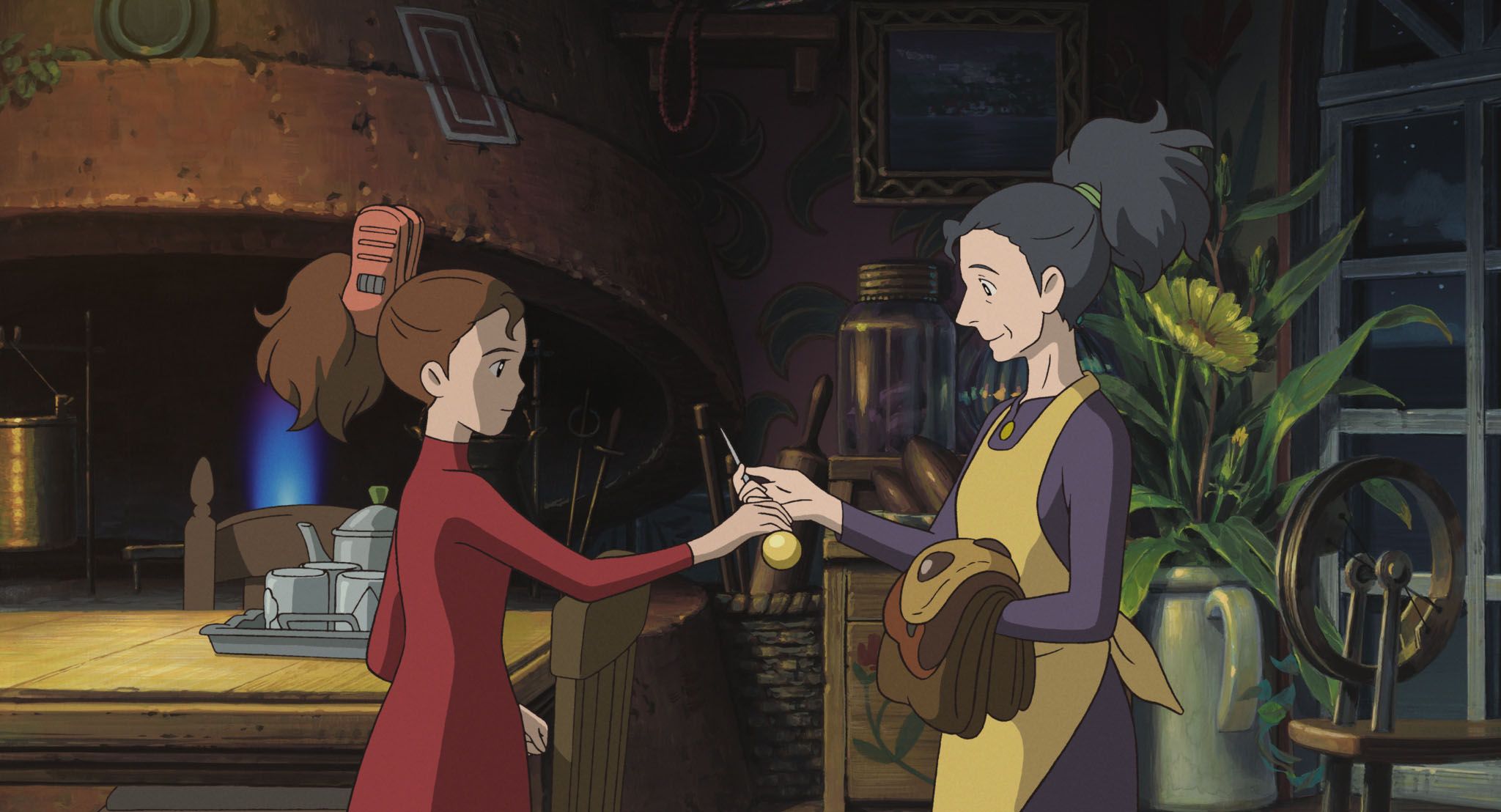
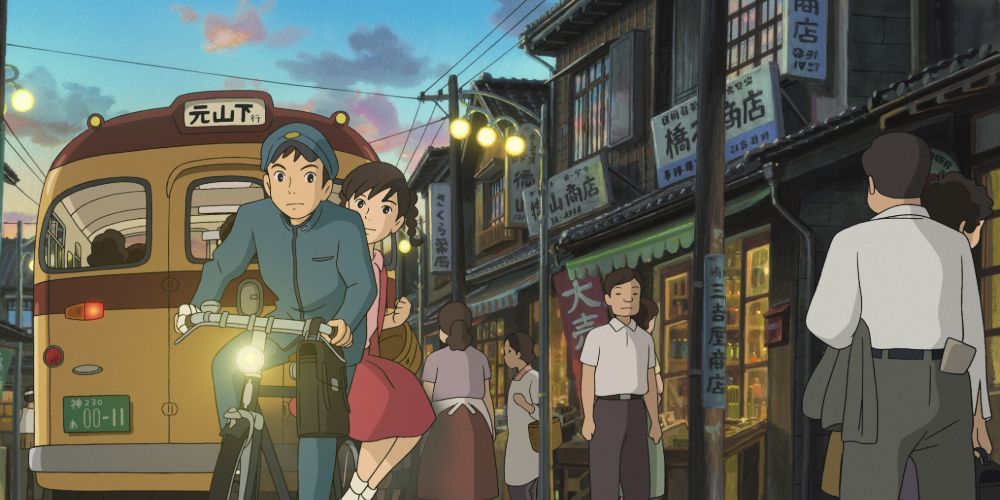
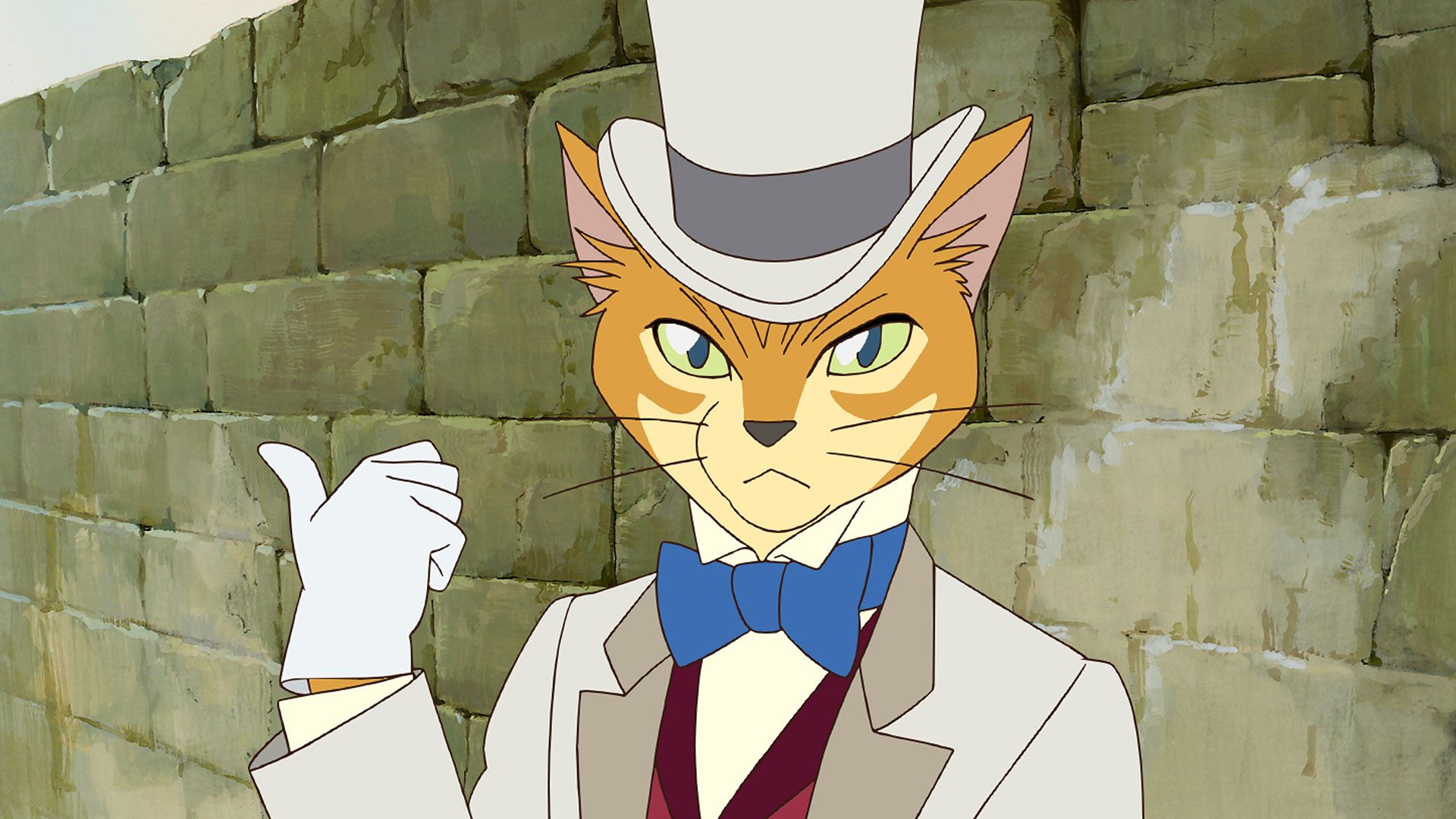
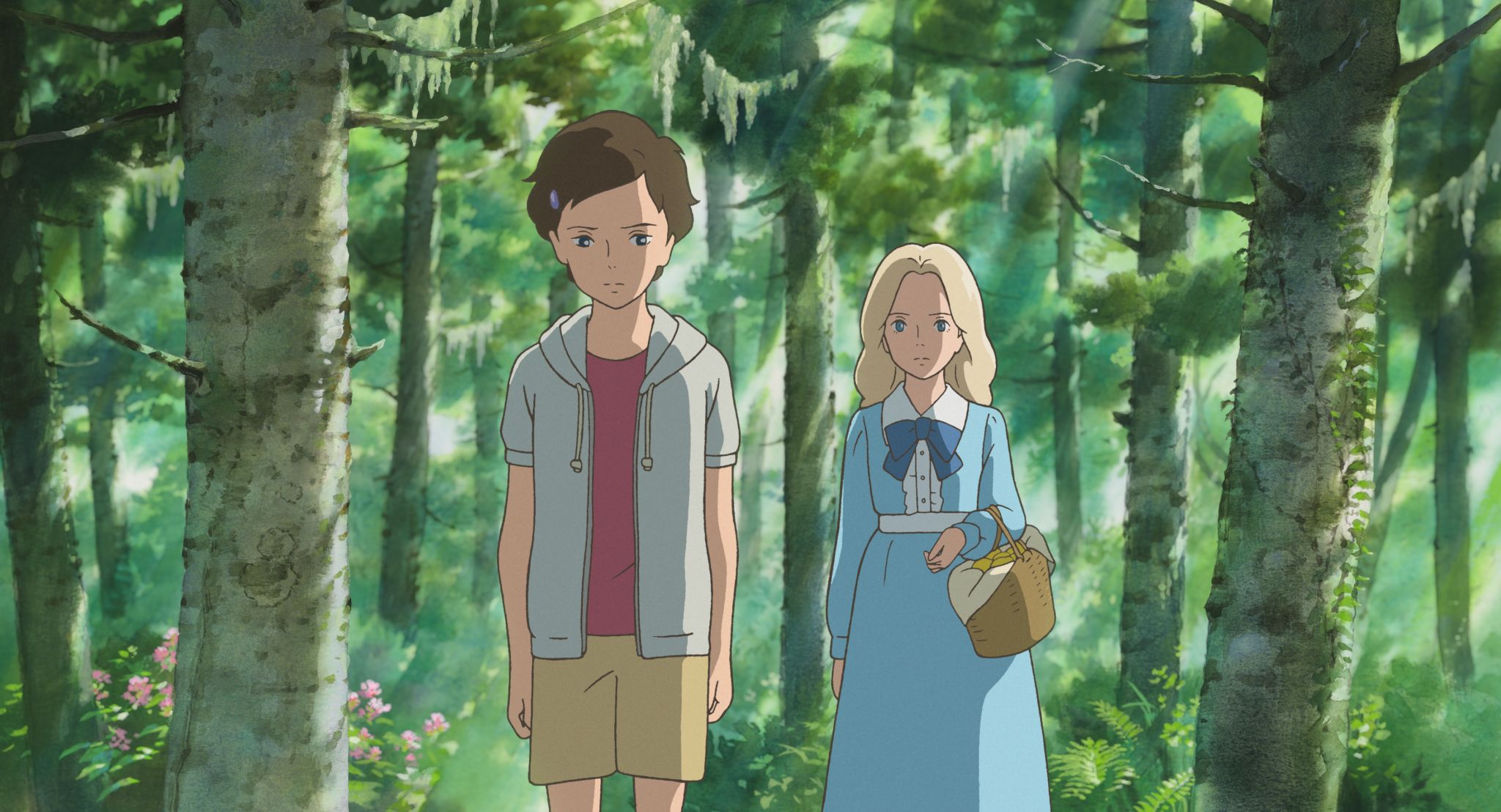
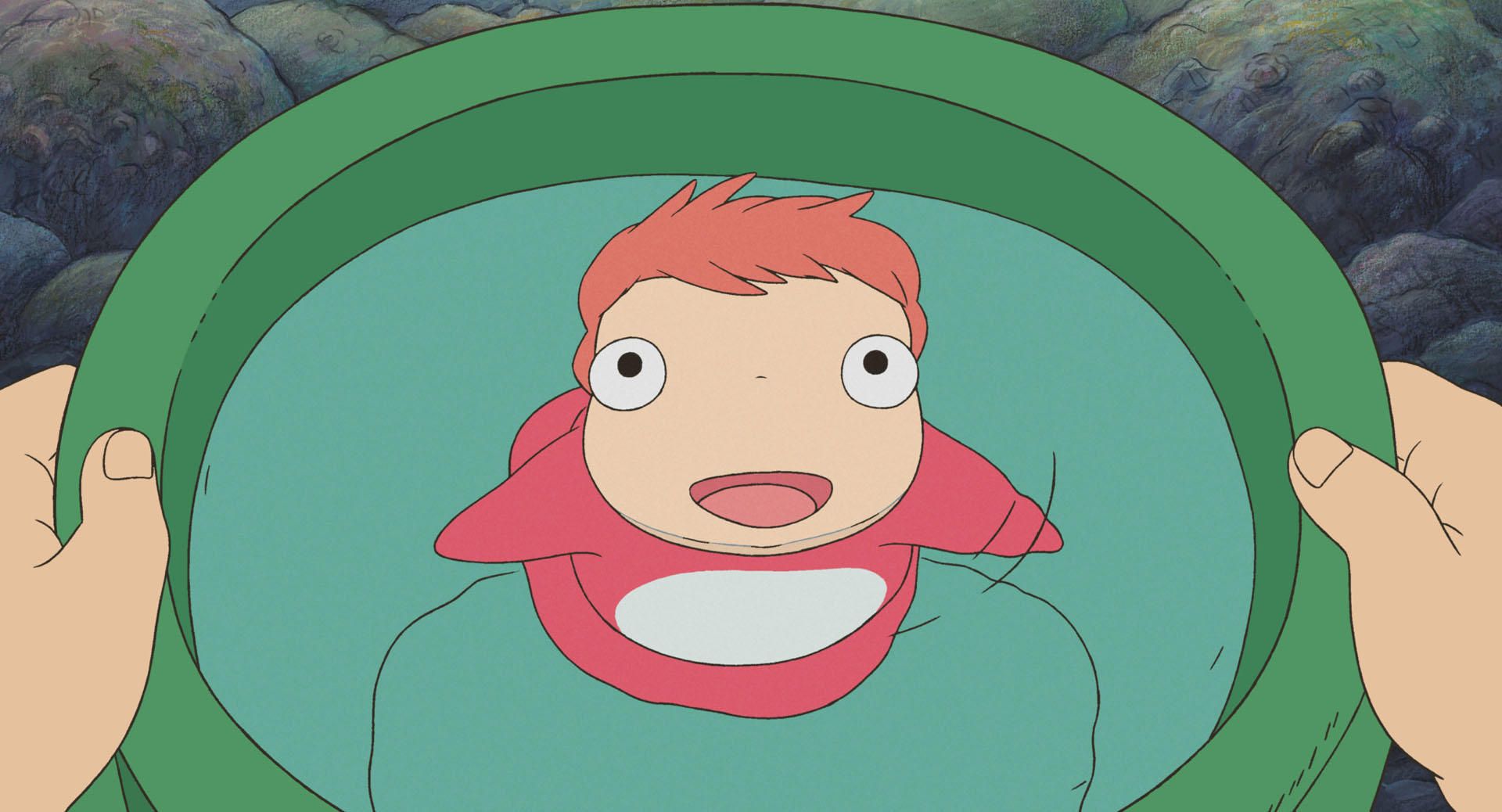
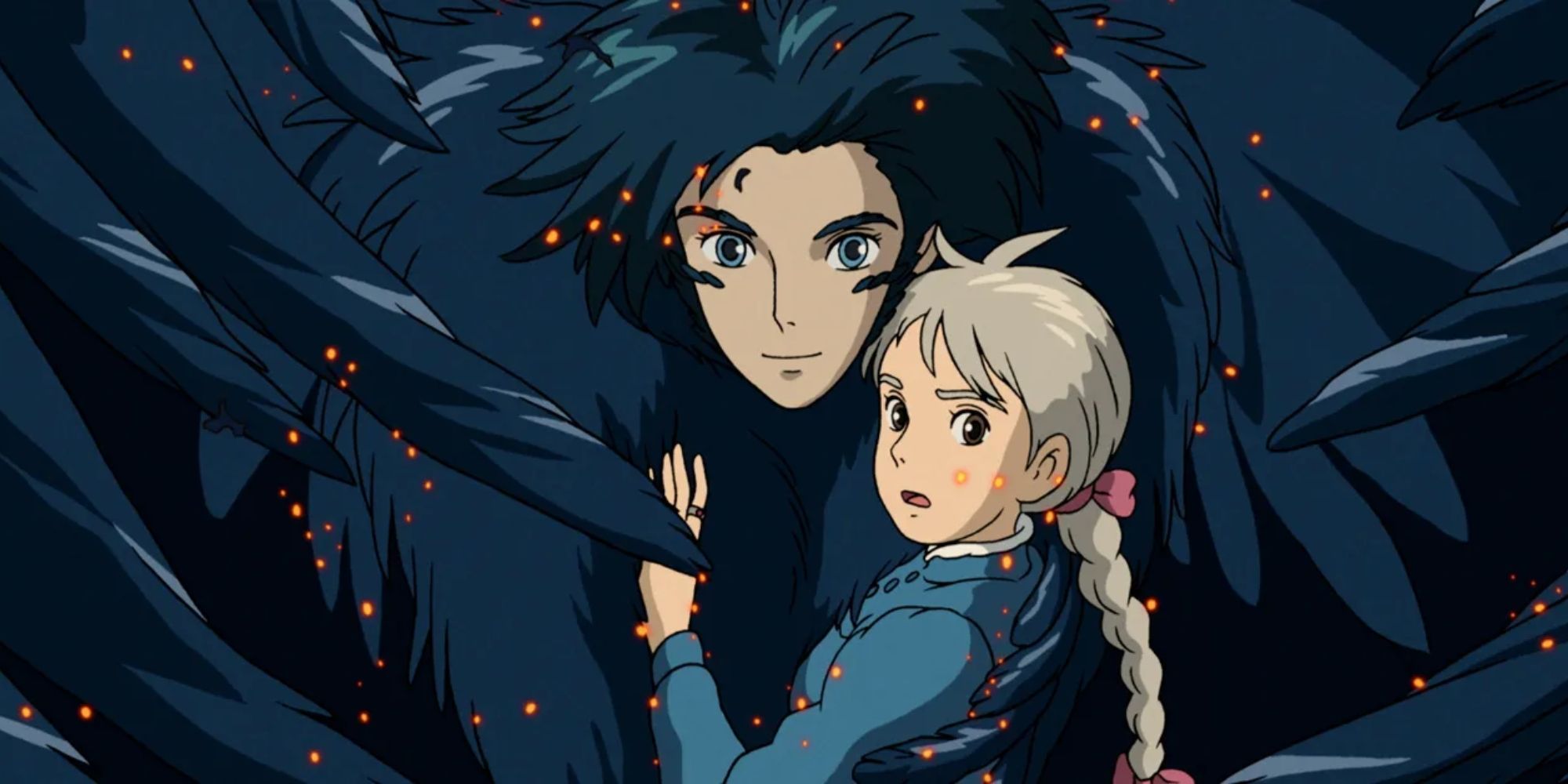
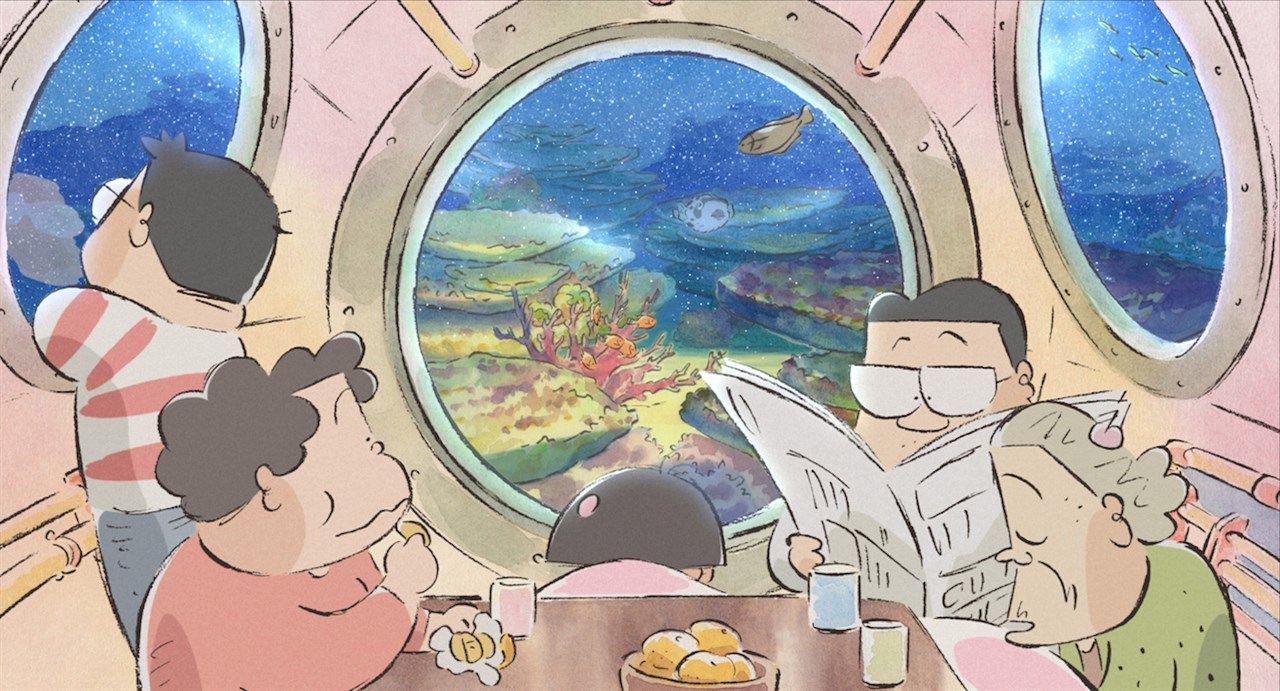
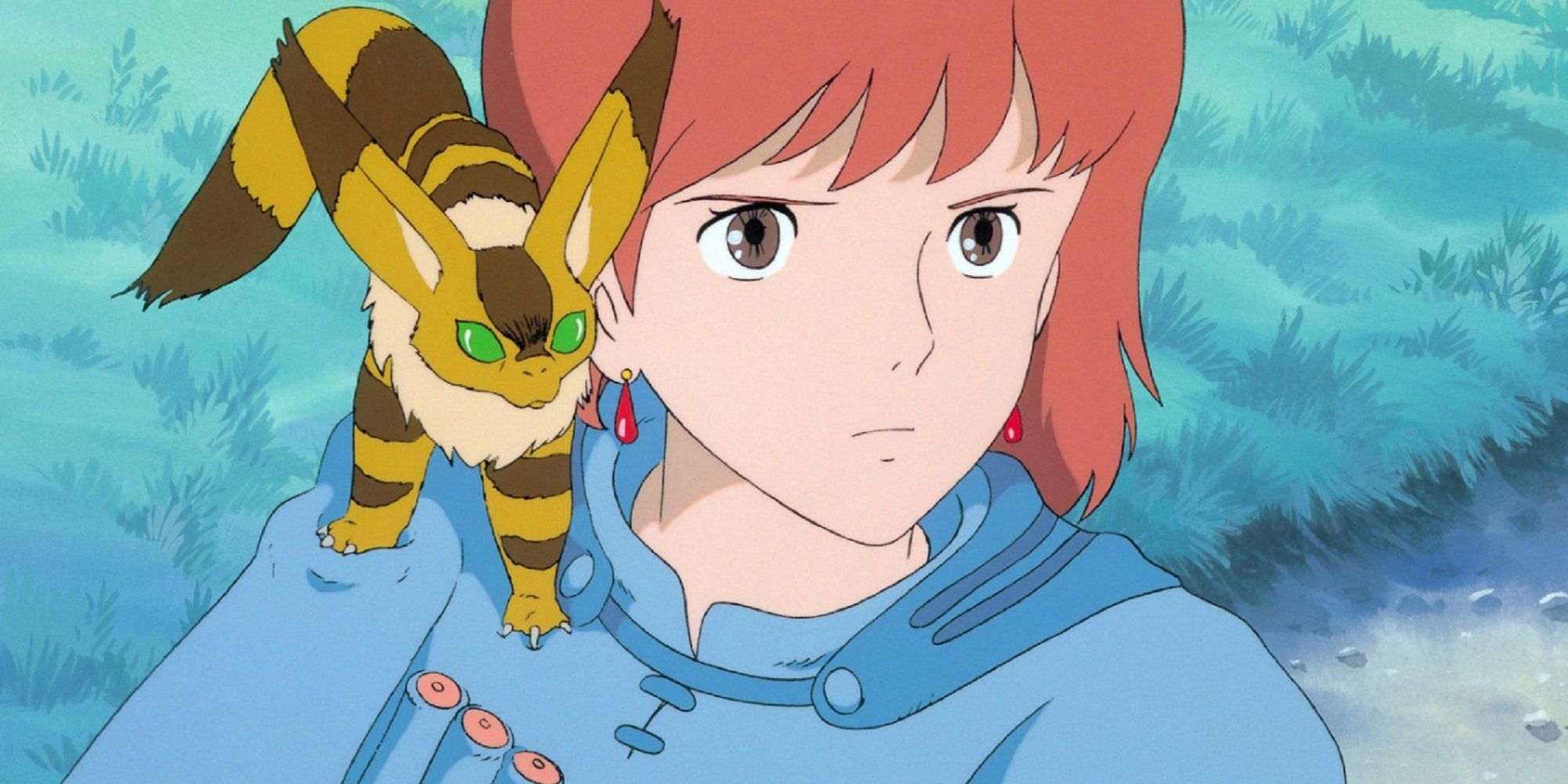
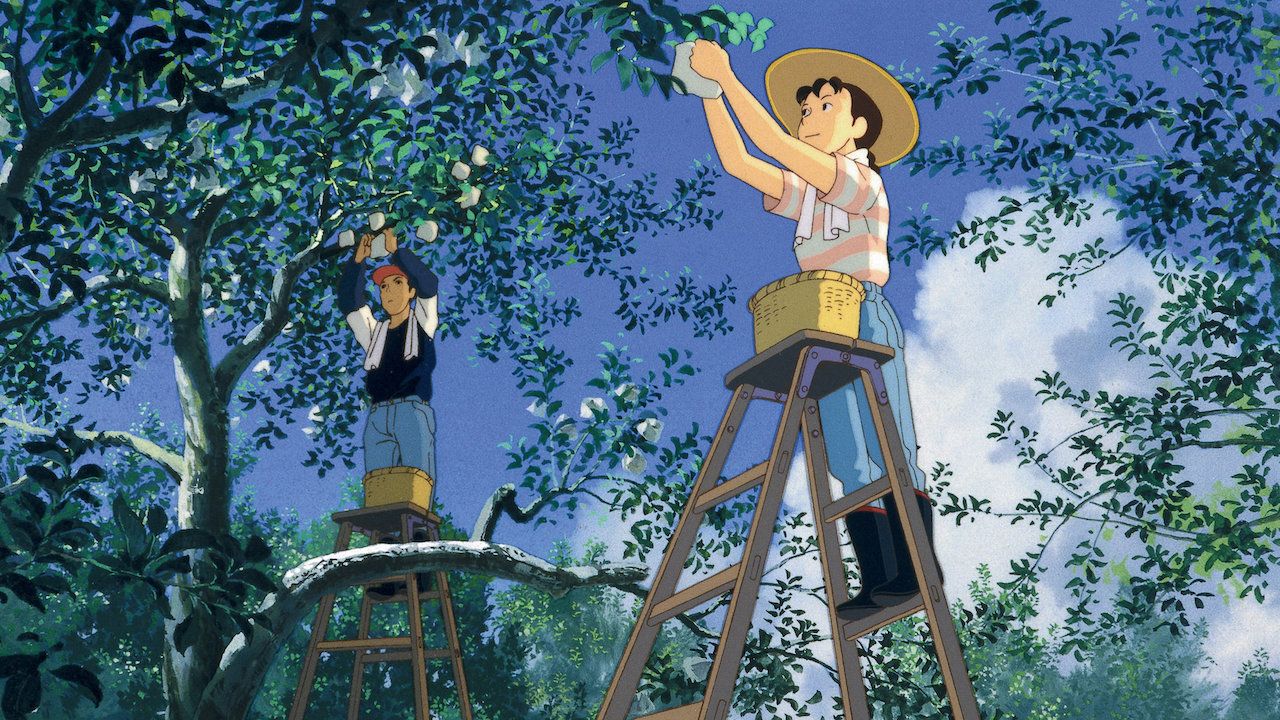
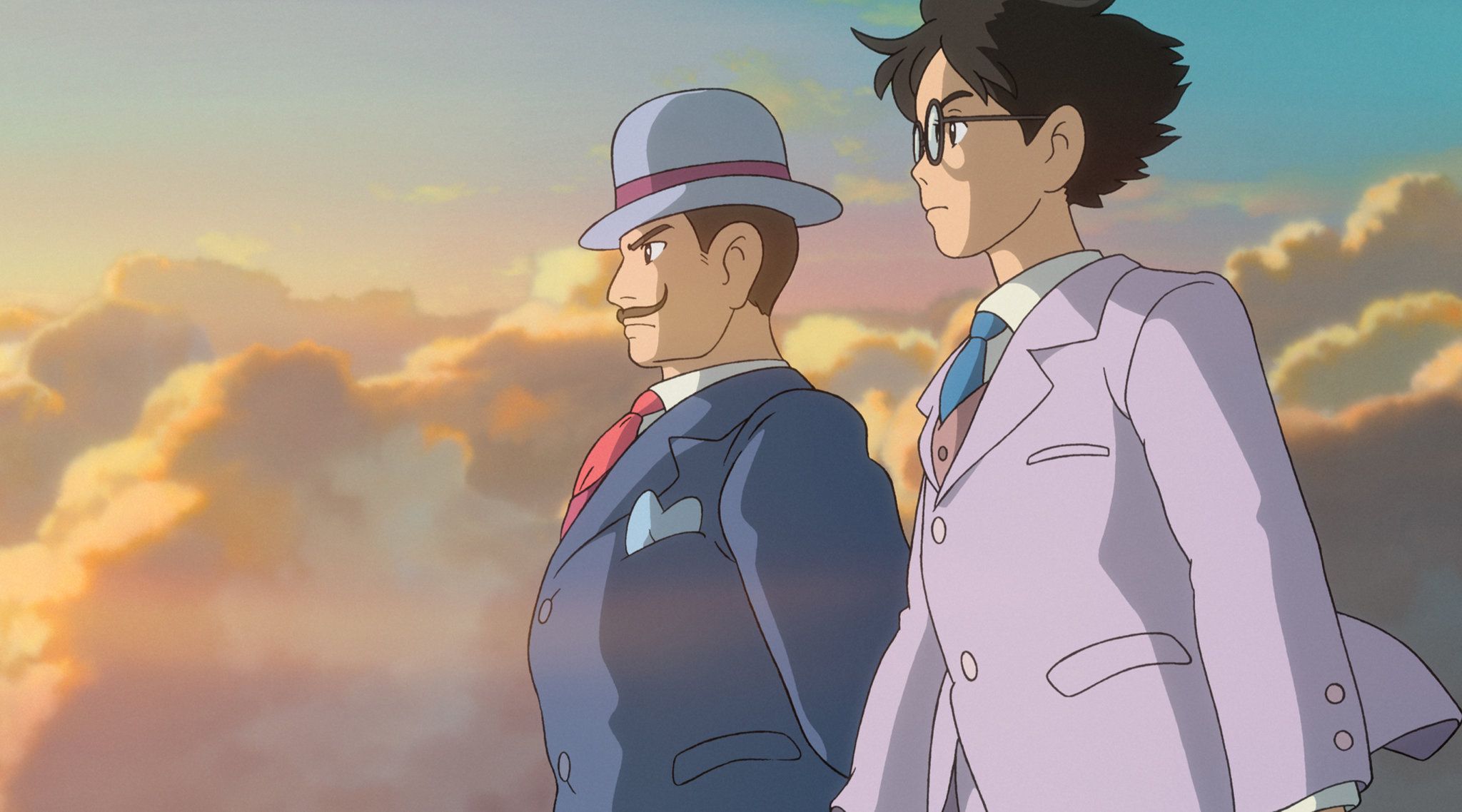
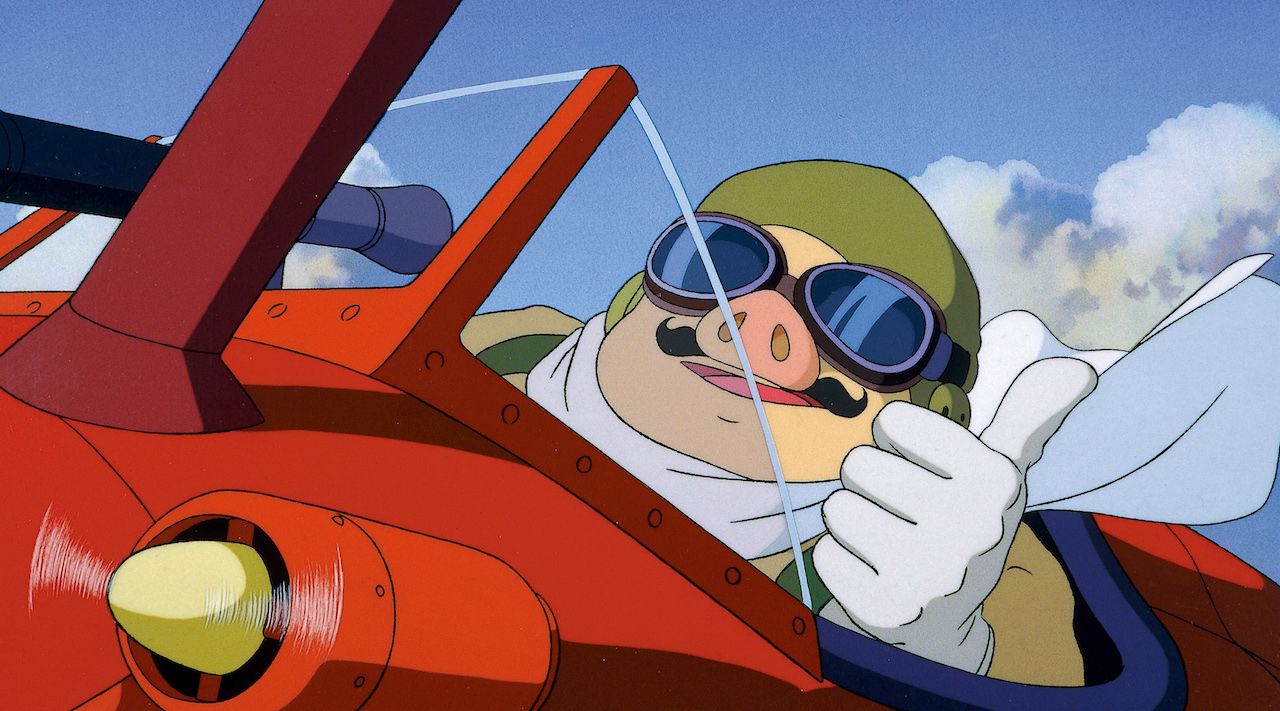
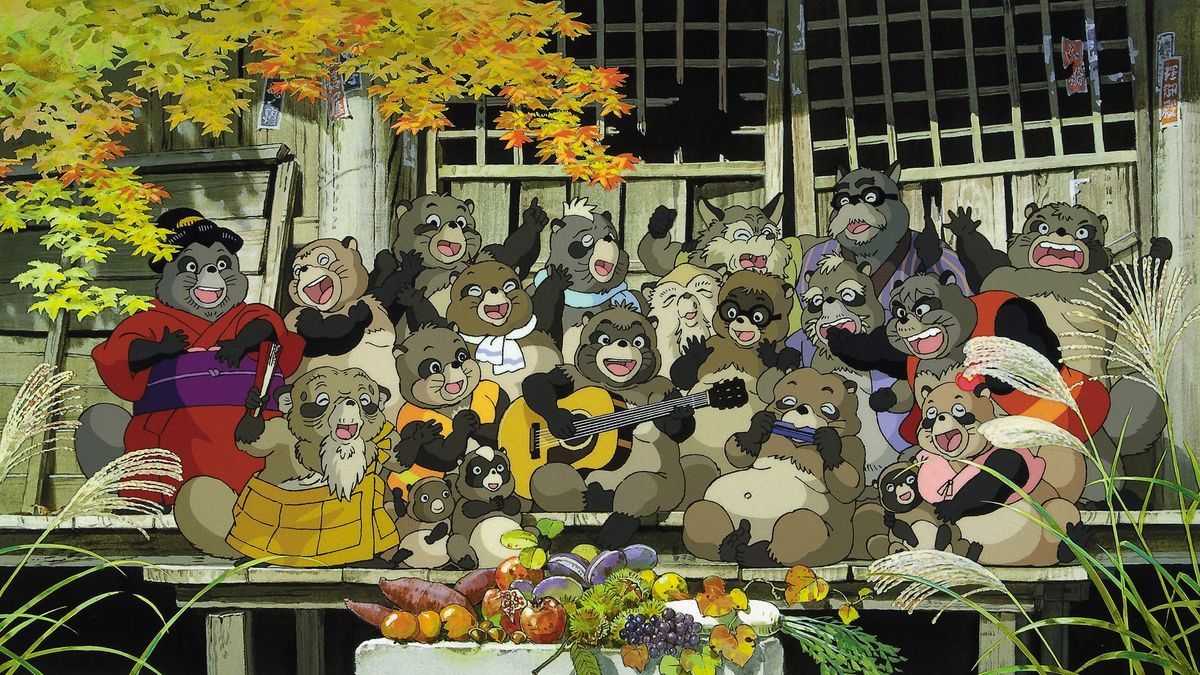
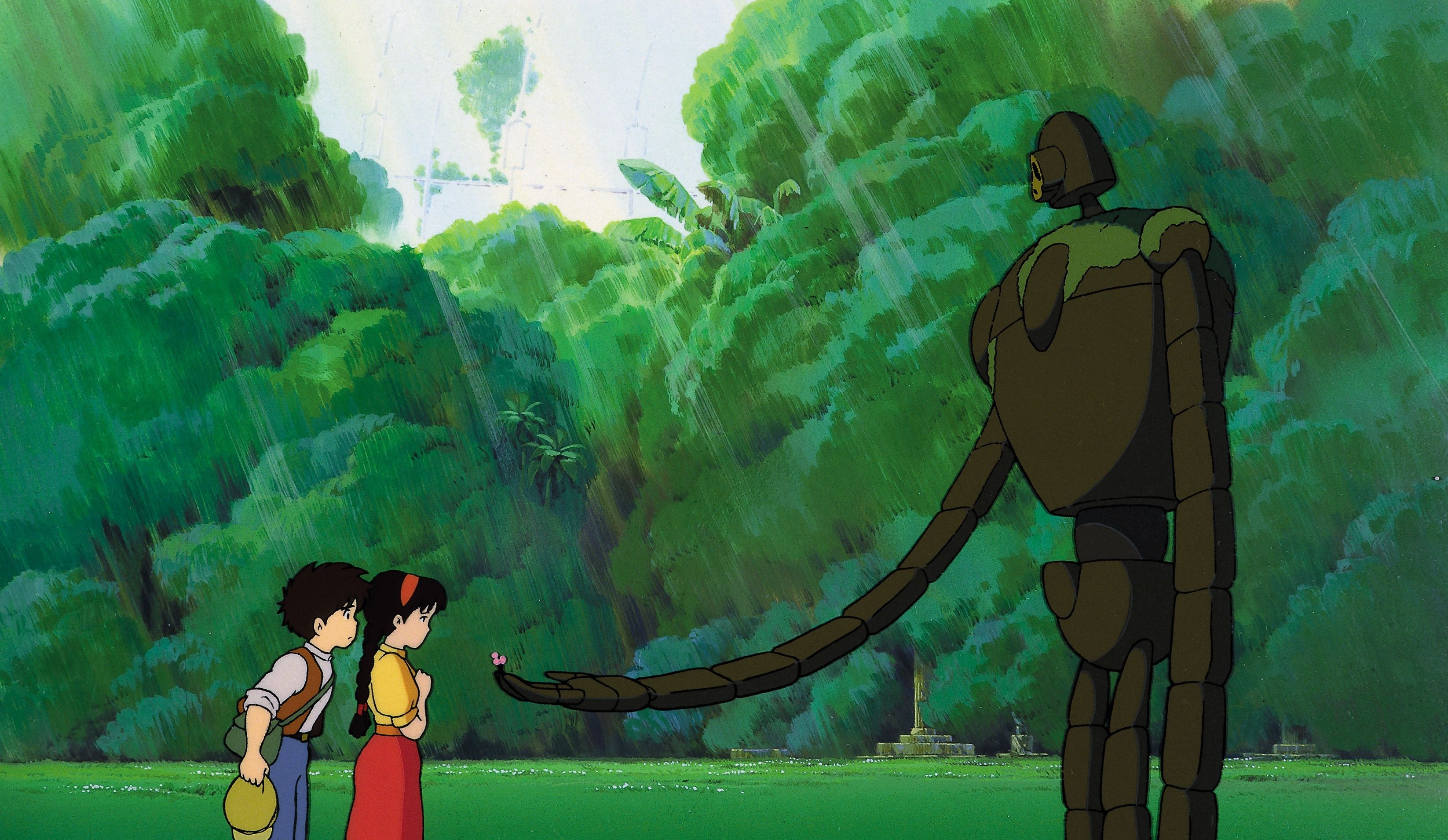
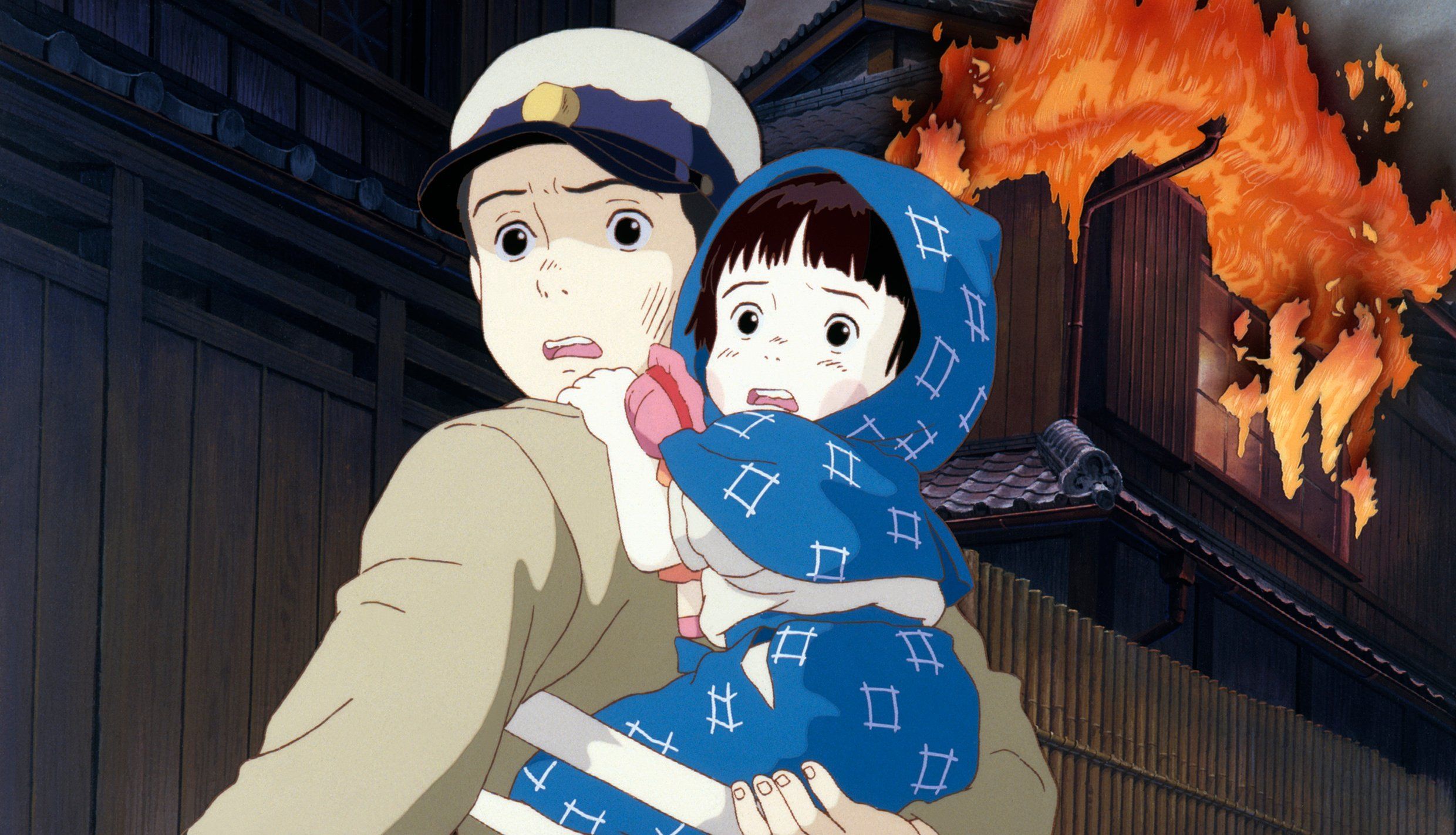
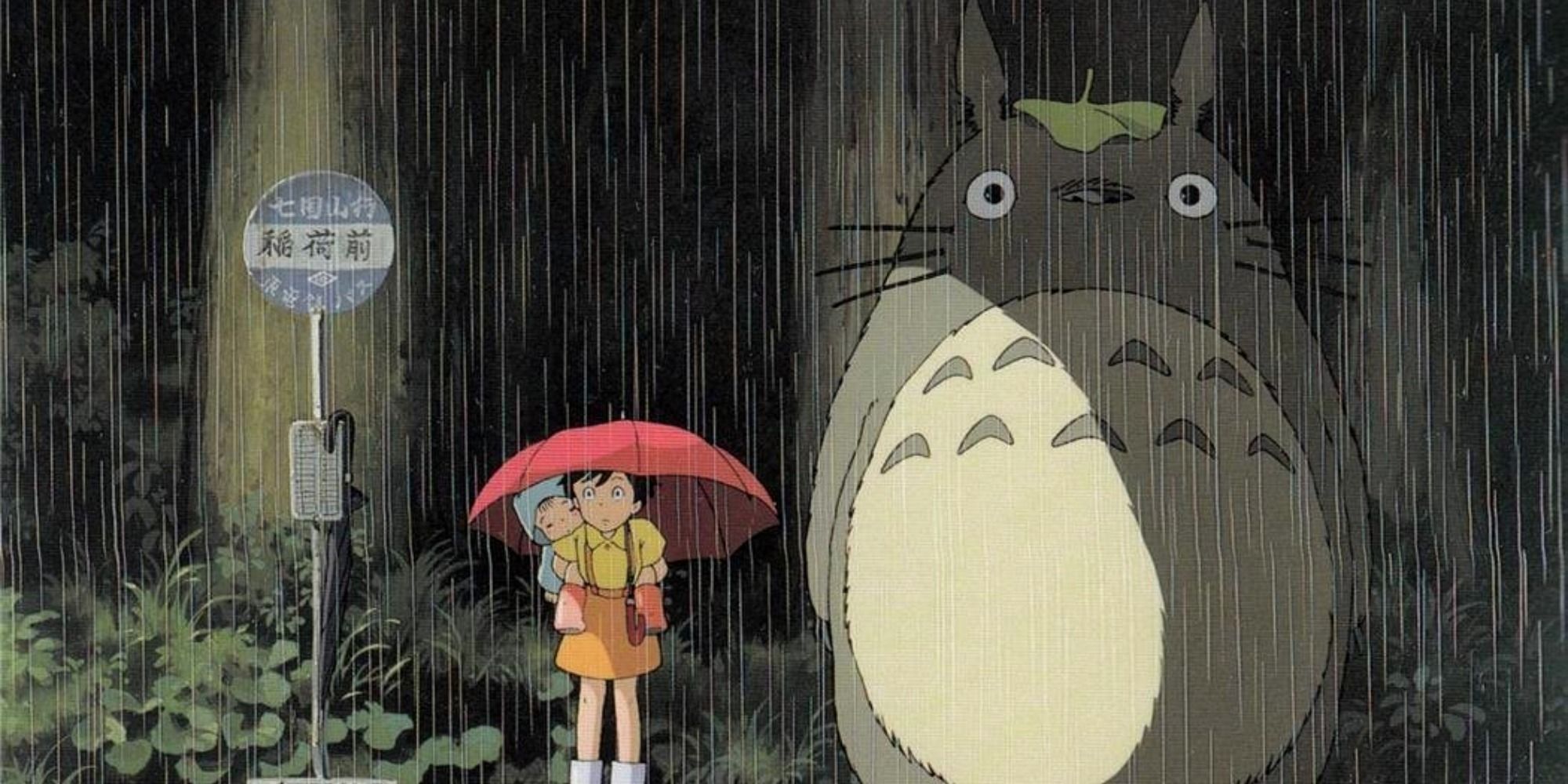
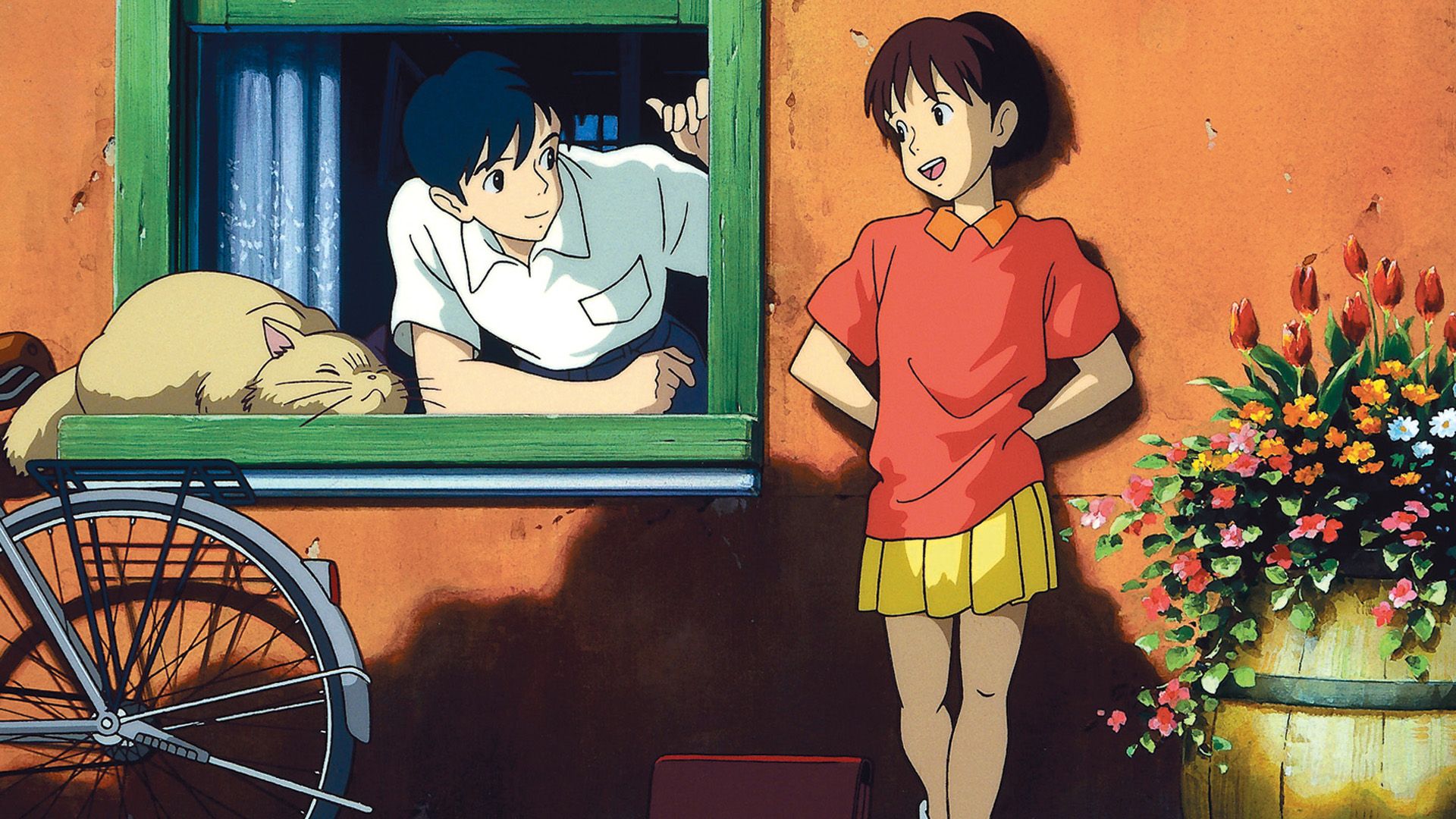
.jpg)